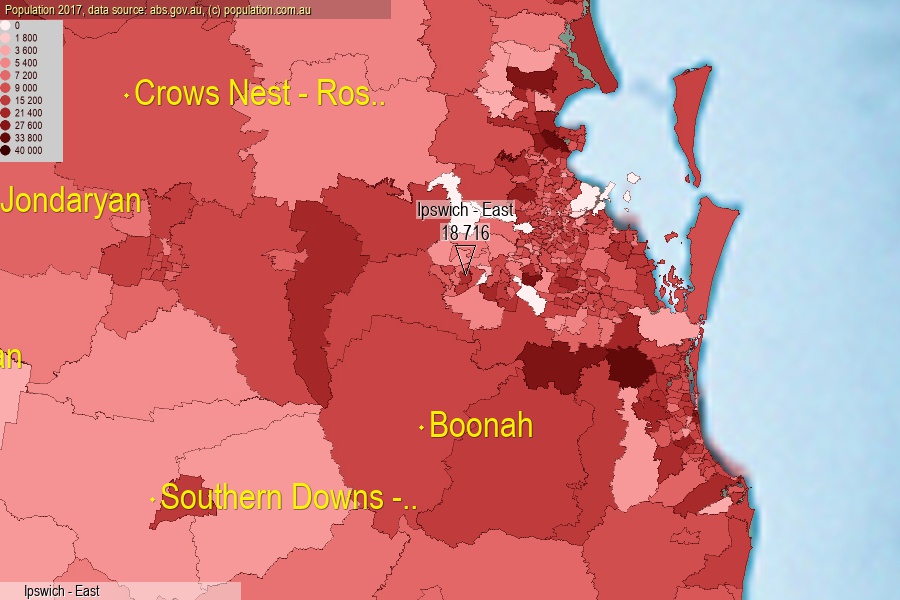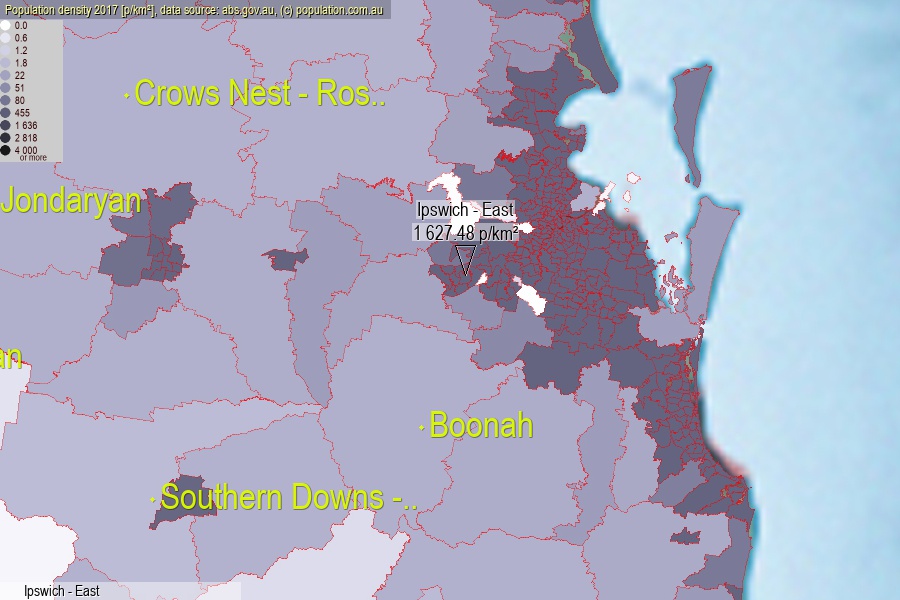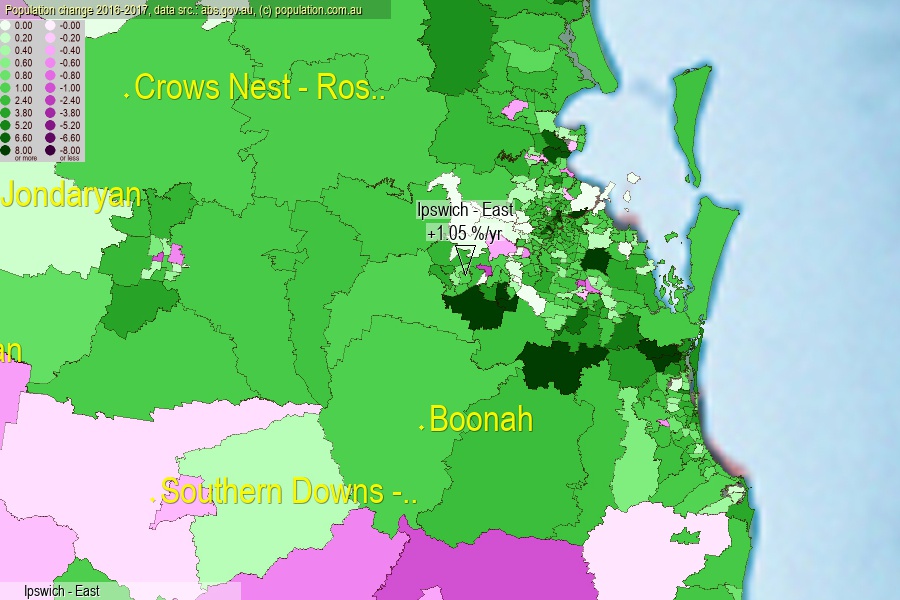 population.com.au
population.com.auLast official estimated population of Ipswich - East (as Statistical Area Level 2) was 18 716 people (on 2017-06-30)[2]. This was 0.08% of total Australian population and 0.375% of QLD population. Area of Ipswich - East is 11.50 km², in this year population density was 1 627.48 p/km² . If population growth rate would be same as in period 2016-2017 (+1.05%/yr), Ipswich - East population in 2025 would be 20 352. [0]



Click to enlarge. Ipswich - East is located in the center of the images.
Population [people], population density [p./km²] and population change [%/year] [2]
View borders » (new window) [4]
[1991-1992] -1.00 %/Yr.
[1992-1993] -0.91 %/Yr.
[1993-1994] -2.13 %/Yr.
[1994-1995] -1.10 %/Yr.
[1995-1996] -0.35 %/Yr.
[1996-1997] -0.48 %/Yr.
[1997-1998] -0.56 %/Yr.
[1998-1999] -0.60 %/Yr.
[1999-2000] -0.28 %/Yr.
[2000-2001] -0.01 %/Yr.
[2001-2002] +0.52 %/Yr.
[2002-2003] +0.30 %/Yr.
[2003-2004] +0.70 %/Yr.
[2004-2005] +0.27 %/Yr.
[2005-2006] +0.38 %/Yr.
[2006-2007] +0.46 %/Yr.
[2007-2008] +0.48 %/Yr.
[2008-2009] +1.66 %/Yr.
[2009-2010] +0.99 %/Yr.
[2010-2011] +0.97 %/Yr.
[2011-2012] +1.43 %/Yr.
[2012-2013] +1.25 %/Yr.
[2013-2014] +0.62 %/Yr.
[2014-2015] +1.15 %/Yr.
[2015-2016] +1.57 %/Yr.
[2016-2017] +1.05 %/Yr.
[0] Calculated with linear interpolation from officially estimated population
[1] Read more about SA2 and Australian Statistical Geography Standard (ASGS) on abs.gov.au
[2] Population data from Australian Bureau of Statistics (Population and density: 2017; change: 2016-2017)
[3] Digital Boundaries: Australian Statistical Geography Standard (ASGS) 2016.
[4] Border coordinates are simplifyed using Ramer-Douglas-Peucker algorithm.